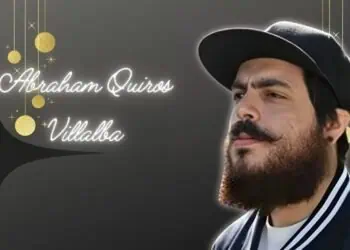The Rich Heritage of Dadiyanki Traditions
The dadiyanki traditions hold a significant place in cultural heritage, representing a deep-rooted connection to the past. These traditions have been passed down through generations, preserving the customs and rituals of the dadiyanki community. Let’s explore the origins, history, and cultural importance of dadiyanki traditions in this section.
Origins and History of Dadiyanki Traditions
The dadiyanki traditions have a fascinating history that dates back centuries. The exact origins of these traditions are shrouded in the mists of time, with varying accounts and legends passed down through oral traditions. The term “dadiyanki” itself holds a deep meaning, symbolizing the reverence and respect for ancestors.
According to some historical accounts, the dadiyanki traditions originated in the ancient kingdom of Dadiya, located in the foothills of the Himalayas. The people of this region developed unique customs and practices that were deeply intertwined with their cultural and spiritual beliefs. Over time, these traditions spread to neighboring regions and communities, further enriching the diversity of dadiyanki customs.
Significance and Cultural Importance
The dadiyanki traditions hold immense cultural importance and are considered a treasured part of the community’s identity. These traditions serve as a bridge between the past and the present, connecting individuals to their ancestors and roots. They act as a reminder of the values, beliefs, and wisdom passed down through generations.
The dadiyanki traditions encompass a wide range of rituals, ceremonies, and practices that are observed on various occasions, such as festivals, weddings, and milestone events. These traditions not only serve as a means of cultural expression but also foster a sense of unity and belonging within the dadiyanki community.
Through the preservation and continuation of dadiyanki traditions, individuals gain a deeper understanding of their heritage, fostering a sense of pride in their cultural identity. These traditions also provide an opportunity for intergenerational bonding, as older family members pass down their knowledge and experiences to younger generations.
In the next section, we will delve deeper into the specific rituals and customs that are an integral part of dadiyanki traditions. For more information on the meaning and significance of dadiyanki, visit our article on dadiyanki meaning and dadiyanki origin. To explore the historical aspect, you can refer to our article on dadiyanki history.
Exploring Dadiyanki Rituals and Customs
Dadiyanki traditions are known for their rich and diverse rituals and customs that have been passed down through generations. These traditions provide a glimpse into the cultural heritage and values of the Dadiyanki community. Let’s explore some of the traditional practices and ceremonies that are an integral part of Dadiyanki culture, as well as the modern interpretations and evolutions of these customs.
Traditional Practices and Ceremonies
The Dadiyanki community holds a variety of traditional practices and ceremonies that are deeply rooted in their culture and beliefs. These rituals are often performed during significant life events, religious festivals, and community gatherings. Some of the notable traditional practices and ceremonies include:
1. Naming Ceremony
The naming ceremony is an important custom in the Dadiyanki community. It is performed to officially give a name to a newborn baby. The ceremony usually takes place within a few weeks of the child’s birth and involves blessings from family members and community elders.
2. Wedding Rituals
Dadiyanki weddings are characterized by a series of rituals and customs that celebrate the union of two individuals. These ceremonies include pre-wedding rituals like engagement, mehndi (henna), and sangeet (musical evening), as well as the main wedding ceremony and post-wedding rituals such as blessings and receptions.
3. Festivals and Celebrations
Dadiyanki traditions also encompass various festivals and celebrations that hold cultural and religious significance. These include Diwali (Festival of Lights), Navratri (Nine Nights of Worship), and Holi (Festival of Colors). During these festivals, special rituals, prayers, and community gatherings are organized to commemorate the occasion.
Modern Interpretations and Evolutions
While traditional practices and ceremonies continue to be cherished, Dadiyanki customs have also evolved over time to adapt to the changing society and preferences of the community. Modern interpretations of these rituals often incorporate contemporary elements and personalization. Some of the ways in which Dadiyanki traditions have evolved include:
1. Incorporation of Technology
With the advent of technology, Dadiyanki customs have embraced modern tools to enhance the experience of rituals and ceremonies. For instance, live streaming or video calls may be used to involve distant relatives who are unable to physically attend an event.
2. Personalized Ceremonies
In recent years, there has been a trend towards personalized ceremonies that reflect the individuality and preferences of the couple or family involved. This may involve incorporating unique themes, customized decorations, or personalized vows to make the ceremony more meaningful and memorable.
3. Interfaith and Intercultural Celebrations
As society becomes more diverse and interconnected, interfaith and intercultural marriages have become more common. Dadiyanki traditions have adapted to embrace these unions, often incorporating elements from different cultures and religions to create inclusive and harmonious celebrations.
The exploration of Dadiyanki rituals and customs provides a deeper understanding of the rich cultural heritage and the evolving nature of these traditions. Whether adhering to timeless practices or embracing new interpretations, Dadiyanki traditions continue to be a source of pride and celebration for the community.








